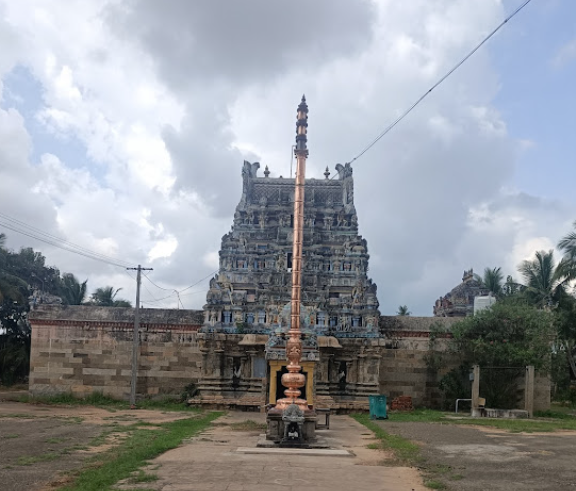Origin/History :-
The Tiruvusaattaanam Mandira Pureeswarar Temple, originally built by the Cholas, showcases later architectural contributions by the Pandyas. The temple has significant inscriptions that date back to the reigns of prominent Chola kings such as Vikrama Chola, Raja Raja Chola III, Rajendra Chola III, and Kulothunga Chola III, as well as Pandya king Jatavarman Sundara Pandyan. These inscriptions provide insight into the temple's development, donations, and renovations during these periods.
The architecture of the temple reflects a blend of the majestic Chola style, known for its intricately carved pillars, sculptures, and large vimanas, along with the Pandya style, which emphasises elaborate ornamentation and artistic craftsmanship. The temple thus stands as a symbol of the region's rich cultural and architectural heritage, showcasing the influence of both the Chola and Pandya dynasties.
Puranic Significance :-
- Etymology:
Kovilur was historically known as “Thiru Usathanam” during the time of Thevaram hymns. The name "Usathanam" is derived from the Tamil word “Usavuthal,” which means inquiring or seeking information.
- Manthira Pureeswarar:
The presiding deity, Lord Shiva, is known as Manthira Pureeswarar because he blessed Lord Rama with Manthropadesam (sacred counsel) for constructing the Sethu Bridge during his journey in the Ramayana.
- Relationship with the Ramayana:
Thevaram hymns on this temple mention the worship performed by Lord Rama, Lakshmana, Hanuman, Jambavan, and Sugreeva at this sacred site. Several places around the temple are named in connection with this legend, including Raman Koil, Jambavan Odai, Hanuman Kaadu, Sugreevan Pettai, and Thambikku Nallan Pattanam, further emphasising the temple’s deep association with the Ramayana narrative.
